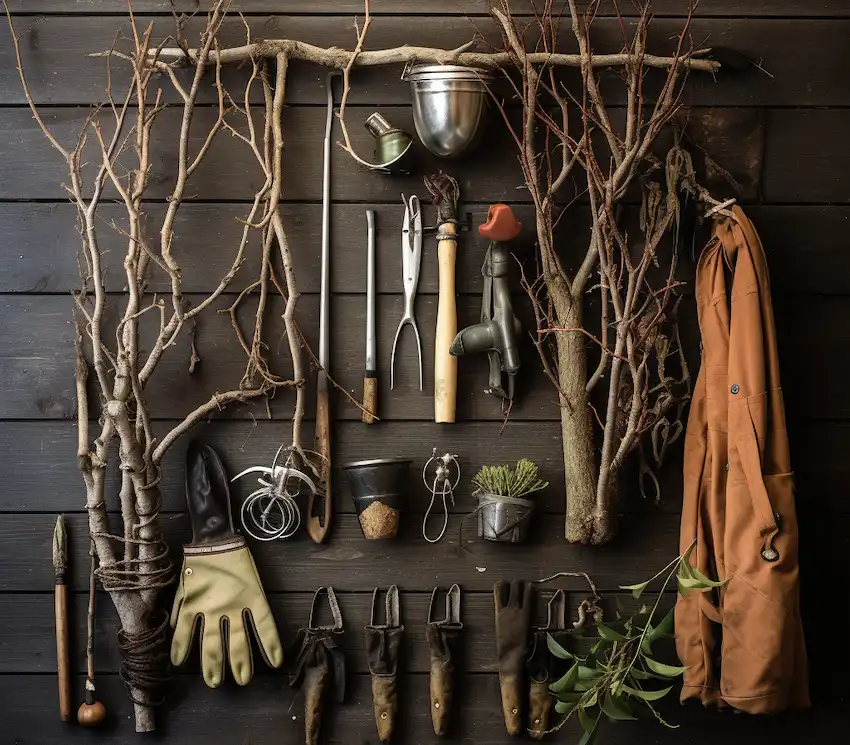
Wickerwork has been used for centuries to create sturdy, beautiful structures. By weaving together flexible branches or twigs, mainly from willow or hazel, you can create a durable and aesthetically pleasing raised garden bed.
Required materials
- Flexible branches or twigs (willow or hazel are ideal)
- Stable posts (approx. 60 cm longer than the desired height of the bed)
- Hammer or hammer
- Garden shears
- Gardening gloves
- Tape measure
- Soil and compost mix
Step by step instructions
1. Planning and design
- Determine the size and location of your raised bed. Make sure it receives adequate sunlight depending on the plants you plan to grow.
- Sketch a rough design, including dimensions and shape.
2. Preparing the website
- Clear the area of weeds and debris.
- Level the floor where you want the bed to be placed.
- Mark the outline of the bed with string or chalk.
3. Collect materials
- Collect long, flexible branches or twigs. Willow and hazel are preferred for their flexibility and strength.
- Cut the branches into even lengths, taking into account the height and circumference of your bed.
4. Installation of inserts
- Cut the stakes to the desired length (bed height plus 2 feet).
- Drive the stakes into the ground at regular intervals around the marked area, so that about 60 cm of the stake protrudes above the ground.
5. Weaving wickerwork
- Starting at one corner, weave the flexible branches horizontally between the stakes, alternating the side on which each branch begins to create a sturdy, interlocking structure.
- If necessary, gently bend the branches and intertwine them tightly.
- Cut off excess lengths with pruning shears.
6. Build the walls
- Add more layers of braided branches until the desired height is reached.
- Make sure each layer is tightly woven together for stability.
7. Securing the top
- Tuck the ends of the last layer of branches into the mesh to secure them.
- Optionally add a stiffer border on top for a cleaner finish.
8. Fill with soil
- Mix garden soil with compost to provide plants with a nutrient-rich environment.
- Fill the wickerwork raised bed with the soil-compost mixture.
9. Plants
- Choose plants that suit the size of the bed and the available sunlight.
- Plant your seeds or seedlings according to their specific needs.

10. Maintenance
- Water your plants regularly and keep the soil moist but not waterlogged.
- Add mulch to retain moisture.
- Prune and maintain branches as needed to keep them neat and intact.
Building a wicker raised bed is not only a great DIY project, but also an eco-friendly way to enhance your garden. While this traditional technique is time-consuming, it results in a functional and attractive addition to any outdoor space.
Tips
- For longer lasting lichens, use freshly cut, green wood.
- The flexibility of the branches is crucial for easier weaving.
- Regular care of the wickerwork extends its lifespan.
By following these steps, you can create a beautiful and sustainable raised bed that will serve you well for many years. Happy gardening!
